2019 Lexus UX Review | UX 200 and UX 250h

Lexus takes claim to inventing the luxury crossover segment when the RX first came out a decade ago and now it’s hoping to build on that massive success with an all-new subcompact model, the UX.
Lexus called it the UX because Toyota’s luxury brand says it’s built for Urban Explorers, but the UX also stands for Urban Crossover (the X is for cross). We drove this small SUV for the first time in Stockholm, Sweden, a vibrant city that effortlessly combines the traditional and the modern, just like Lexus hopes the UX will.
Driving Dynamics
One of the great parts of the UX is that it’s built on an enhanced version of the same platform the Toyota C-HR uses. That’s a good thing because the C-HR has excellent and surprisingly fun driving dynamics, and that carries over to this Lexus. What that means is that it is surprisingly nimble and alive. It feels light and agile but still cushy and quiet like you’d expect from a Lexus, which makes it feel a lot more luxurious than the crashy and stiff C-HR without sacrificing its fun handling.
Get the Flash Player to see this player.
FAST FACTS
| Engine: | 2.0L four-cylinder / hybrid adds battery and electric motor |
| Output: | 169 hp, 151 lb-ft / 175 total system hp |
| Transmission: | CVT |
| US Fuel Economy (est. MPG): | 33 combined (gas) / 38 combined (hybrid) |
| CAN Fuel Economy (est. L/100 km): | 7.1 (gas) / 6.2 (hybrid) |
| US Price: | Starts at $32,000 / $34,000 for hybrid (plus $1,025 DPH) |
| CAN Price: | Not yet available |
That platform has a negative, however — it is not available with AWD. The only way to get AWD in this car is to get the hybrid, which uses an electric motor for the rear wheels, and even then, it can only send up to 80% of the motor’s power to the rear axle at speeds under 43 mph (70 km/h). At speeds higher than that, only the front wheels are driven. That’s not a huge downside, because the goal is efficiency here, not performance.
ALSO SEE: 2019 Volvo XC40 vs 2018 BMW X1
A lot of people shopping this segment want AWD, though, and all of its competitors have AWD available, so that’s an important thing to note. But really, there’s no reason not to get the hybrid, except for the slight price premium and smaller cargo capacity.
The gas UX 200 is powered by a naturally aspirated 2.0L four-cylinder engine that outputs 169 hp and 151 lb-ft of torque and it uses regular gas. Going with no turbo engine is an interesting move considering that’s pretty much the standard for all its competitors. Although it’s not super quick getting to 60 mph in 8.9 seconds (100 km/h in 9.2 seconds), the engine feels decent but a bit coarse under demands for quicker acceleration. Lexus does a good job at filtering out any harshness from the cabin, however, as it remains pretty quiet inside.
The UX 250h model uses an Atkinson cycle version of that engine and adds an electric motor and nickel metal hydride battery pack into the mix, which brings total system output to 175 hp. The hybrid feels noticeably peppier than the gas model, though its 8.6-second run to 60 mph (8.7 seconds to 100 km/h) isn’t that much of a difference on paper. The hybrid is expected to get 38 mpg combined.
ALSO SEE: Where is Lexus Made?
The gas model gets power to the front wheels via a CVT, but in an interesting and much-appreciated move, it uses a mechanical first gear, which helps the UX feel more natural and responsive off the line. Lexus calls this a Direct Shift CVT, and the CVT can simulate 10 forward gears if you use the paddle shifters. That mechanical first gear, however, doesn’t make passing quicker and the UX experiences a bit of hesitation if you mat the throttle.
The availability of AWD makes the hybrid model the one to get, but the better driving dynamics and higher output of the hybrid setup is also compelling. The battery packs are stored underneath the rear seats, which helps keep the center of gravity low and doesn’t obstruct passenger space.
Cargo capacity isn’t that great, however, with just 17.1 cubic feet (484 L) in the hybrid model’s trunk and 21.7 (614 L) in the gas model (no figures for seats-down cargo capacity were released). Although it has some handy underfloor storage, it also has a higher lift height and a rather small opening, so if maximum practicality is what you’re looking for, this might not be the best bet.
Lexus set out to make the UX drive and feel like a hatchback and it has succeeded. Feeling planted, the UX is low to the ground, making getting in and out easy and comfortable, allowing you to slide out instead of jump, though if you wanted a higher seating position, you’re out of luck. Frontward visibility is also excellent with thin A-pillars and even a small triangle window between the pillar and the side mirror helping as well.
Visibility out the back isn’t as good, but there is an excellent 360-degree parking camera to help. Something that will also come in very handy for city driving and parking garages is the UX’s tiny turning radius — Lexus said its 34.2-foot (10.4 m) turning circle is the tightest in its segment. Getting lost a dozen times trying to navigate Stockholm’s confusing web of roads, the tight turning circle was very much appreciated.
ALSO SEE: 2019 Lexus ES 350 Review
Technology
I can’t talk about a Lexus without mentioning the one thing that frustrates me the most about its cars — the touchpad. I’ve said it before and I’ll say it again: the touchpad system is awful and far too distracting to use while driving. It’s not intuitive at all. Infotainment systems should be familiar as soon as you get into the car for the first time and require no learning curve.
They have new buttons and scroll wheels integrated where you rest your hand on the center console, which is nice, but it doesn’t make this system any more likable or user-friendly.
There is Apple CarPlay and Amazon Alexa support (no Android Auto because Lexus says 80% of its customers have Apple phones) and it helps, but you still have to use the touchpad to use it, which isn’t a great solution. A neat touch is that the UX will be compatible with smartwatches and some Google Assistant-enabled devices, which you can use to lock/unlock the car, start the engine, or check fuel levels.
Lexus is proud that it’s offering its suite of driver assistance and safety technology as standard equipment. It now offers a pre-collision system with pedestrian detection with night vision and the ability to detect cyclists during the day, lane keep assist, full-speed adaptive cruise control, automatic high beams, and road sign assist.
The adaptive cruise control feels natural and progressive, though the lane keep assist and lane centering still feels like it’s fighting with the driver. An excellent HUD is also on offer along with wireless charging for your smartphone, wifi hotspot capability, four USB ports, blind spot monitoring, a 360-degree parking camera, and more.
Something new on offer with the hybrid model is tech that takes some of the guesswork out of hypermiling. Lexus has a new feature called “Predictive Efficient Drive” that analyzes driving habits combined with road and traffic conditions to optimize how the car uses regenerative braking to recharge the hybrid’s battery. For example, if the car knows there’s a hill coming, it will prepare for additional regenerative braking energy harnessed when going down the hill.
I’m a big fan of the texture and colors of this interior. From two-tone leather seats to textured leather and plastics, you can tell Lexus tried hard to make this an inviting, luxurious and visually interesting interior. You can get the UX with a two-tone dark blue and cream leather design that even has an interesting diamond design and unique stitching. Besides the Volvo XC40, this is one of the most interesting interiors in this segment.
The Verdict: 2019 Lexus UX Review
In the U.S., 69% of Lexus’ sales are SUVs and crossovers, so it’s sure to have a runaway hit with this UX. Although it’s not perfect, the UX comes with a lot of tech, a cool interior, a good chassis, and competitive price, so it makes a pretty compelling argument. If I were buying a UX, the hybrid model is the one I’d pick, however. Even if you aren’t into “green cars,” the hybrid model feels quicker and drives better than the gas one.
In the U.S., the UX 200 goes on sale in December and the UX 250h hybrid model in January 2019. Pricing in the U.S. starts at $32,000 for the UX 200, $34,000 for the UX 250h, and an additional $2,000 to add the performance-oriented F-Sport package to either. Canadian pricing has not yet been announced. As a pilot project in certain cities in the U.S., the UX will also be offered through an all-inclusive subscription service, but the pricing and structure for that haven’t been announced yet.
Discuss this article on our Lexus UX Forum
LOVE IT
- Great driving dynamics
- Fun and luxurious interior
- Unique design
- Standard driver assistance features
LEAVE IT
- Touchpad interface is terrible
- Small cargo capacity
- No Android Auto
- No AWD for gas models

Jodi has been obsessed with cars since she was little and has been an automotive journalist for the past 12 years. She has a Bachelor of Journalism from Ryerson University in Toronto, is a member of the Automobile Journalists Association of Canada (AJAC), and a jury member for the prestigious North American Car/Truck/Utility Vehicle of the Year (NACTOY). Besides hosting videos, and writing news, reviews and features, Jodi is the Editor-in-Chief of AutoGuide.com and takes care of the site's day-to-day operations.
More by Jodi Lai



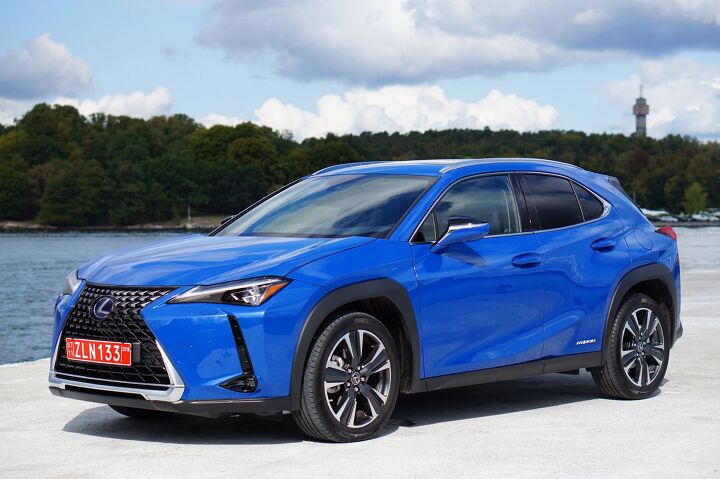
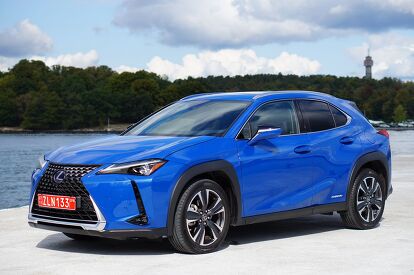


























































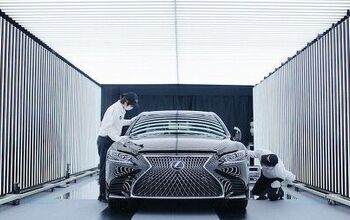
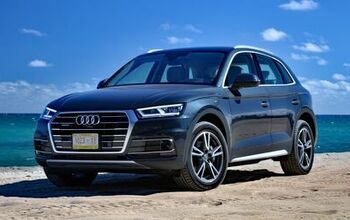
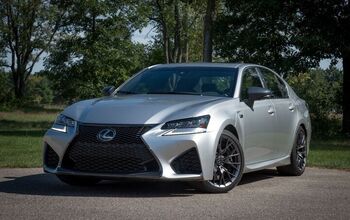







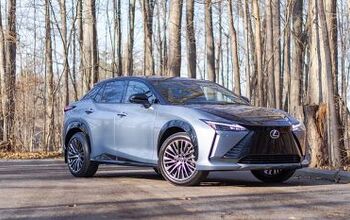

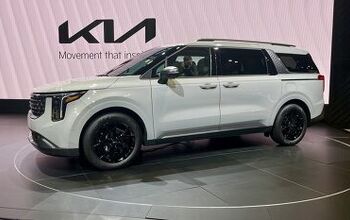
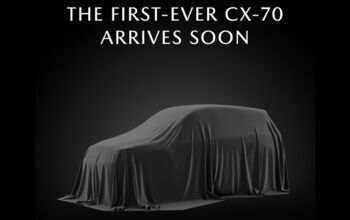

Comments
Join the conversation
Strange.. I expected cargo area to not be differentiated between the petrol and hybrid variants since I thought the battery pack was located under the rear seat.. ..and the powertrains alone ruins an otherwise pretty nice vehicle overall. Funny since those were the powertrains the C-HR could've used in the first place.
Hi Jodi, is it quieter and more comfortable (as in softer ride and more comfortable seats) compared to the NX? :)